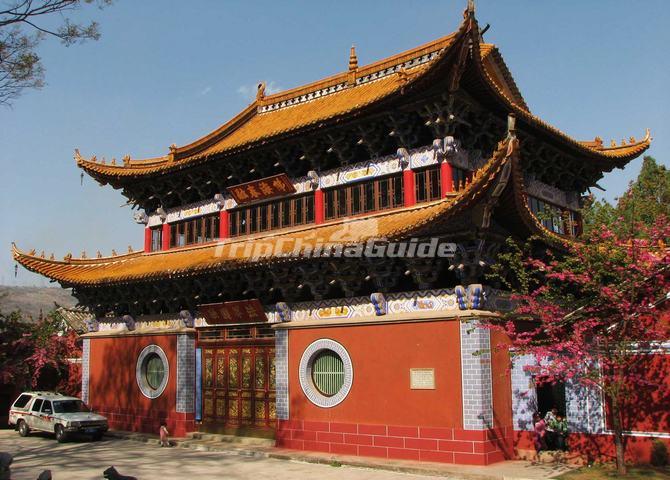History of Kunming
The development of Kunming’s economy and society is very closely associated with the formation and evolution of Dianchi Lake. About 4,000 to 7,000 years ago farming minorities settled in the Dianchi Lake area and began primitive agricultural activities there.
From 298 B.C. to 277 B.C. the Zhuang people from Chu State established the Dian Kingdom here in Dianchi Lake area, which brought a more advanced culture from Chu State and the middle of China to the Dian Kingdom and invigorated local politics and the economy. The Han Dynasty (205 BC–AD 220), seeking control over the Southern Silk Road running to Burma and India, brought small parts of Yunnan into China's orbit, though subsequent dynasties could do little to tame what was then a remote and wild borderland. During the Sui dynasty (581–618), two military expeditions were launched against the area, and it was renamed Kunzhou in Chinese sources.
Founded in 765, Kunming was known to the Chinese as Tuodong city in the Kingdom of Nanzhao (737–902) during the 8th and 9th centuries. Tuodong later became part of the successor Kingdom of Dali (937–1253). Eventually this changed when Tuodong came under the control of the Yuan Dynasty invasion of the southwest in 1252-1253. In 1276 it was founded by the Mongol rulers as Kunming County and became the provincial capital of Yunnan.
In the 14th century, Kunming was retaken as the Ming Dynasty defeated the Mongols, which built a wall surrounding present-day Kunming. Ming General Wu Sangui defected to Manchu invaders 300 years later and held the city until his death in 1678, long after the rest of China had fallen under Manchu rule. During the Ming (1368–1644) and Qing (1644–1911) dynasties, it was the seat of the superior prefecture of Yunnan. At the end of the Qing Dynasty, the government chose Kunming as a commercial port. In 1910, Dianyue Railway was completed, which comprehensively enhanced the role of Kunming.
The opening of the Kunming area began in earnest with the completion in 1906-1910 of the Yunnan-Vietnam Railway to Haiphong in north Vietnam (part of French Indochina). Kunming became a treaty port opening to foreign trade in 1908 and soon became a commercial center. In the 1930s its importance grew still further when the first highways were built, linking Kunming with Chongqing in Sichuan and Guiyang in Guizhou to the east. Kunming's rail link to Hanoi was cut during World War II, restored in 1957, cut again in 1979, and reopened in 1996.
In the 1980s and 1990s, the city center was rebuilt, with Swiss help, in its current modern style to impress visitors attending the 1999 World Horticultural Exposition. Now, the World Horticultural Expo is widely regarded as a public relations success for Kunming, which seemed to exceed almost all expectations. The Expo made the outside world take notice of Kunming. In July 2006 talks at the ASEAN Regional Forum, China, Bangladesh and Myanmar (Burma) agreed to construct a highway from Kunming to Chittagong through Mandalay for trade and development.
A Building of the Qiongzhu Temple in Kunming
Recommended China Tour Packages
-
2-day Best Henan Vacation Package
-
9-day Beijing Xi'an Shanghai Tour
-
6-day Huangguoshu Waterfall and Miao Culture













